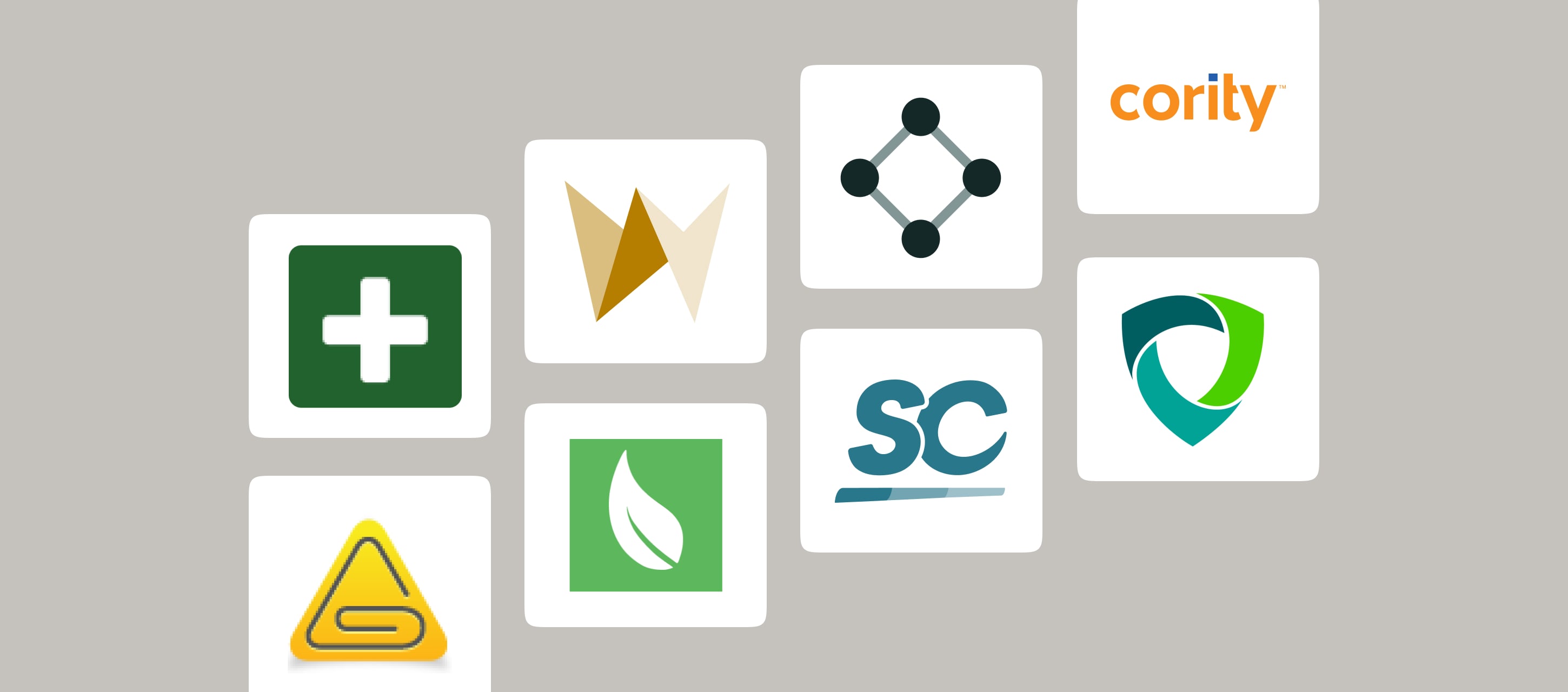Imagine Sarah, a safety manager, walking the production floor, scanning for hazards. When she stops to chat with a machine operator, she learns about a visibility issue around a high-traffic corner. Thanks to Sarah’s walk, a potential risk is caught before anyone gets hurt.
This is the value of a safety walk: it helps your teams feel safe and valued, while protecting you from incidents and fines. So let’s talk about how safety walks work, why they’re essential, and how field productivity tools like Fluix can make them more effective.
Contents:
What Is a Safety Walk?
A safety walk (also known as a safety walkaround or safety walkdown) is when you – whether as a manager, supervisor, or safety leader – tour the workplace to spot hazards, check safety measures, and connect with your team to create a culture of safety.
Think of it as a proactive way to boost not only safety but also field productivity. Safety walks let you see equipment and processes in action, giving you a firsthand look at what’s working well and what could be improved (for example, the environment safety).
In different industries, safety walks serve different purposes. In construction and manufacturing, they’re checking for equipment hazards and ways to keep the work moving smoothly.
For high-risk fields like aviation, energy, or oil & gas, they’re all about preventing serious accidents around heavy machinery, chemicals, or confined spaces. And in places like healthcare and warehousing, safety walks help protect people – patients, staff, or crew members – observe safety, and keeping daily operations safe.
Why You Need a Safety Walk at Your Job Site
The reasons for safety walks go deeper than you might think (and they are not just passing health and safety trends). Sure, protecting everyone’s safety is key – but they also bring unexpected benefits like psychological comfort, reduced stress, and a stronger sense of team support.
As a Manager
When you, as a leader, consistently conduct safety walks, you’re doing more than checking boxes:
- You demonstrate your commitment to safety
- You gain insights into employee engagement with safety protocols, e.g. whether they write incident reports.
- With fewer incidents, you reduce costs, from lost work time to potential compensation claims.
- You create a more cohesive, productive environment.
As a Crew Member
From the crew member’s perspective, a safety walk shows that their voices matter.
- They receive a message that each worker’s safety is respected.
- They experience lower stress, greater peace of mind, and a real sense of belonging.
- Workers who feel supported by regular safety walkarounds tend to be more engaged and loyal.
In fact, many companies report fewer injuries and higher employee retention when safety walks are part of their routine, showing just how valuable they are in shaping a positive, secure workplace culture.
Read More Read More Paper vs. digital: why it’s more secure to manage your safety documentation with software
Areas You Need to be Focusing on During a Safety Walk
During a safety walk, you focus on specific areas that help you catch risks early, make quick fixes, and keep your site safe and productive. A safety walk checklist can be your go-to tool. By using it, you don’t overlook any important details and keep track of observations.
Here are some key elements that often make it onto a safety walk checklist:
- Personal Protective Equipment (PPE): Are employees using PPE correctly?
- Emergency Exits: Are they clearly marked, accessible, and free of any obstacles?
- Worksite Cleanliness: Look out for tripping hazards and clutter.
- Equipment Maintenance: Are machines are in good shape?
- Fire Safety: Are fire extinguishers, alarms, and sprinkler systems in place and easy to access?
- Chemical Storage and Handling: Are hazardous materials labeled, stored properly, and supported by spill-containment measures?
- Electrical Safety: Check for exposed wires, overloaded outlets, or worn cables.
While paper checklists work fine, using digital checklists on a mobile device would offer you a lot more flexibility and accuracy.
Digital tools like Fluix, Jotform or Safesite make it easy to instantly log observations, capture photos, and record notes – all without juggling stacks of paperwork.
Plus, you can automatically save and share findings with your team (or whoever needs to see them), simplifying follow-ups and documentation.
Read More Read More Top 5 construction safety tools that will simplify your life in 2025
How to Conduct a Safety Walkthrough
Follow these three simple steps – preparing, inspecting, following up – and you’ll make it work.
Step 1: Get Ready Before the Walkthrough
Preparation is key. Start by reviewing past inspection reports and any recent injury records to get familiar with recurring issues and make sure past hazards were addressed. Talking with your safety committee, supervisors, or team members also helps you gather useful insights on current concerns.
Make things easier by setting up the essential health and safety documentation. It will ensure you cover all areas critical to safety – like equipment maintenance, materials handling, and employee training. Better yet, using a mobile device for your checklist lets you log findings in real time, making it simpler to track, update, and follow up on issues.
If you know that you may need some employee safety training to do so, don’t wait till the last moment.
Step 2: Perform the On-Site Inspection
On the site, wear your PPE and check that others do, too. Then, take a close look at common safety hazards:
- Blocked exits
- Tripping risks like clutter or misplaced items
- Equipment in need of maintenance
- Poor lighting or exposed wiring
Talking to your team is just as important. Ask questions that encourage open feedback: “What safety issues do you see?” or “If you found a hazard, what would you do?” Employees often notice things management doesn’t, so open dialogue can uncover valuable insights, eventually improving workplace safety.
Step 3: Wrap Up and Follow Through
Your follow-up procedures are critical to demonstrating your commitment level. You will gain the trust and confidence of employees who see you taking their safety seriously.
Prepare a list of the hazards you observed, actions required to correct them, and a timeline for correction. The timeline should be urgent but reasonable.
Some hazards may be complex or require further review. Explain how you will continue to study them and take interim corrective action.
Share your safety report with stakeholders, track and report your progress, and ensure corrective actions occur on time.
How Digital Tools Can Make Your Safety Walks More Efficient
Safety walks are more informal than safety audits, yet they’re packed with opportunities to make your life easier. And platforms like Fluix that help field teams maximise their productivity can double down on that.
1. Use a Mobile App for Data Collection
Mobile apps designed by professional software for inspecting workplace safety let you log data, snap photos, and report instantly. iPads or tablets give your flexibility. And you can instantly share findings with any stakeholders, speeding up the process for immediate corrective actions.
You can even collect data offline in areas without internet access. Once back online, your data syncs automatically, providing a record of each walkthrough.
And, simply put, it’s just more convenient.
2. Use Digital Checklists
Many people don’t realize that fillable PDFs are actually digital forms, so you don’t need to overhaul all your documentation to start using software.
And if you need more advanced functionality, say a word. For example, with Fluix’s dynamic forms, you can breeze through long checklists that require numerous photos with comments.
3. Add GPS and Timestamp
Incorporating GPS and timestamp features allows you to track exactly where and when each part of your safety walk takes place.
These details add reliability and accountability to your reports, helping you monitor field activities with ease and stay on top of your team’s productivity.
4. Great Documentation Based on Findings
When your safety walk reveals areas for improvement, turn them into quick, actionable “toolbox talks.” Before shifts or at project launches, gather the team and go over these specific topics to keep everyone informed (e.g. by creating a toolbox talk workflow).
Digital tools make it easy to create and share these training sessions in real time, reinforcing safety as an ongoing priority.
5. Make Digital Safety Walk Reporting Commonplace
Using digital platforms to report safety walks creates an efficient process where findings are automatically saved and accessible to everyone who needs them.
Fluix Reports allow you to track, organize, and analyze safety data in real-time, so your team spends less time on paperwork and more on actual improvements. With instant access to this data, stakeholders can make quicker, informed decisions, leading to timely corrective actions that enhance both safety and field productivity.
A safety walk is an approach that can significantly impact your teams’ well-being, and Fluix can help you with this.
With a mobile app, digital checklists, automated workflows and real-time collaboration among safety inspectors, you can facilitate identifying safety patterns, address recurring issues, and support improvement in safety practices across your operations.






